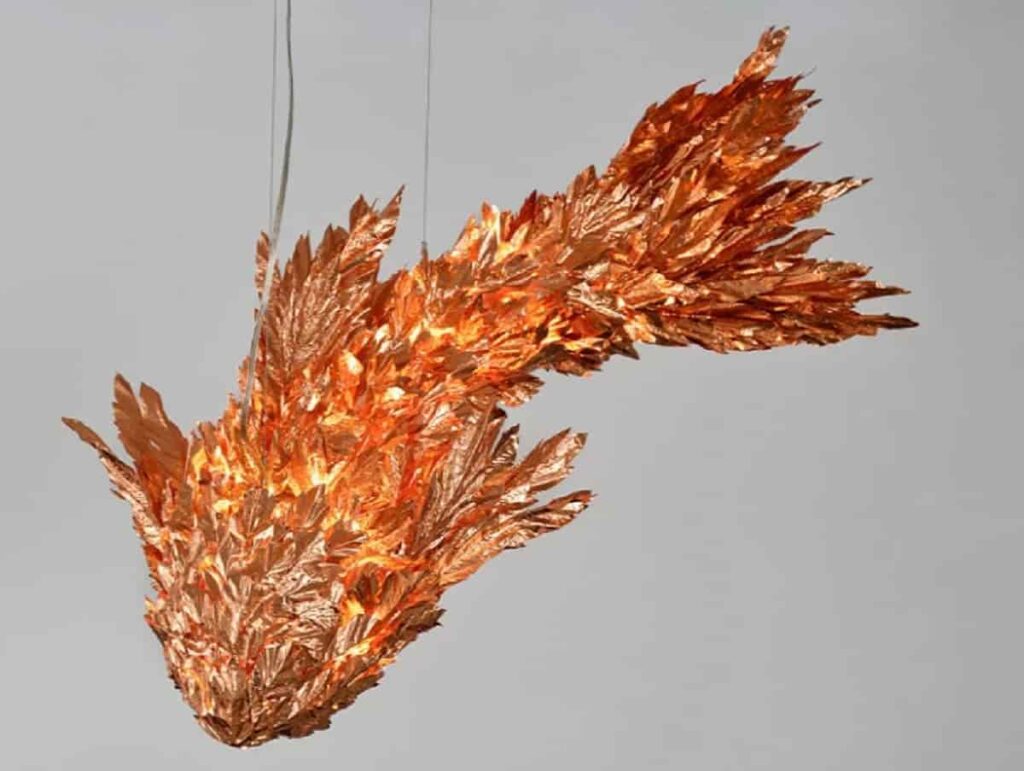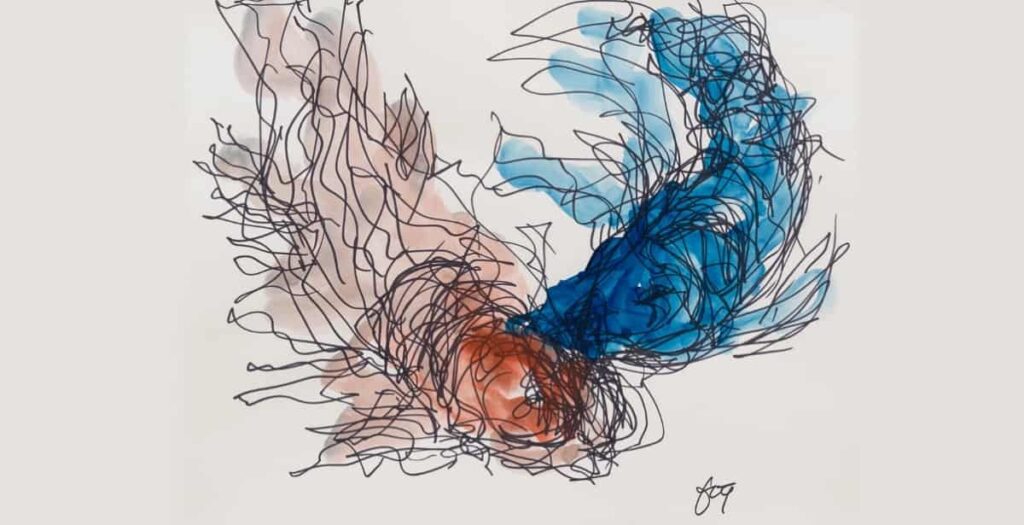ART NEWS
Two fish lamp sculptures in a dialogue. Installation view of Frank Gehry’s Ruminations at the Gagosian Gallery. © Frank O. Gehry, courtesy of Gagosian. Photo: Maris Hutchinson
Frank Gehry titillates New Yorkers with his ruminations of beautiful fish and crocodile lamp sculptures and works on paper.
BY KAZEEM ADELEKE, ARTCENTRON
NEW YORK, NY—Ruminations, an exhibition of new sculptures and works on paper by Frank Gehry at the Gagosian Gallery in New York, highlights the versatility and creativity of the famous architect. The show features large-scale elaborations on objects from Gehry’s Fish Lamps sculpture series dating from 1984 to 1986 and 2012 onwards, a Crocodile Lamp sculpture, and several previously unseen works on paper.
One of the most striking aspects of Ruminations is the meticulous installation of the works, designed to achieve maximum impact. Several sculptures are strategically placed near the gallery’s windows, allowing passersby on Madison Avenue to catch a glimpse of the stunning artworks inside. The internal illumination of some sculptures, crafted from copper and Formica, further enhances their boldness and allure. For example, in the gallery’s first room, a single copper fish hangs suspended from the ceiling, catching the eye of those passing by. Two freestanding clusters, displayed on sturdy, handmade wooden bases, contribute to the installation’s boldness, complementing another large hanging fish nearby.
Fish Lamps Ruminations
The Fish Lamps series, a central part of the exhibition, originated from a commission in 1983, from the Formica Corporation. Gehry’s inspiration comes from the ColorCore plastic laminate. Using its scale-like appearance he creates piscine forms with ColorCore fragments affixed to wire armatures. The leaf-like scales on the copper fish sculptures represent a new motif from Gehry’s personal experiences, such as a hike with his granddaughter.
Frank Gehry’s deep-rooted connection with nature permeates his entire career. It is evident not only in his sculptures but also in his architectural masterpieces. While Gehry’s fish sculptures stand as individual artistic statements, they also reflect a larger theme seen throughout his architectural works—the pursuit of the “perfect form” inspired by ancient creatures.
Inspired By Ancient Creatures

This motif recurs in iconic buildings like the Walt Disney Concert Hall in Los Angeles (2003), the Guggenheim Bilbao (1997), the Fisher Center at Bard College (2001), and the upcoming Guggenheim Abu Dhabi (2025). These architectural marvels boast undulating profiles and organic shapes that mirror the fluidity and elegance of the piscine form. As Gehry said, “I decided the fish was the model for the future of architecture because it expressed sculptural movement.”
In addition to his renowned Fish Lamps series, Frank Gehry’s artistic fascination with the animal kingdom is further exemplified in his Crocodile Lamp sculpture. This fascination extends to other notable works such as Bear with Us (2014), a life-size stainless-steel sculpture showcased in the sculpture garden of the New Orleans Museum of Art, as well as an equine sculpture crafted for Cheval Blanc in Paris. Gehry’s ongoing fascination with the natural world is also demonstrated in the steel tapestry that embellishes the façade of the Dwight D. Eisenhower Memorial in Washington, DC, finalized in 2020.
Expressive Works on Paper

Alongside Gehry’s sculptures are several works on paper that showcase his energetic and expressive style. These drawings were done in ink, watercolor, and acrylic. They capture the dynamic motion of the piscine form using organic networks of black lines and patches of color. These works on paper resonate with Gehry’s architectural sketches and studies, showcasing continuity in his artistic vision.
Frank Gehry is celebrated for his revolutionary approach to architectural design, which delves into primal, natural forms. He critiques postmodernist architecture for its self-imposed constraints, arguing that it confines itself to historical references within the discipline. Gehry, however, aims to transcend these limitations by seeking inspiration from nature and its flawless forms. His creative portfolio extends beyond architecture to encompass significant bodies of sculpture and furniture. This includes his pioneering works such as Easy Edges (1969–73) and Experimental Edges (1979–82), which feature chairs and tables crafted from corrugated cardboard. There is also his bentwood furniture designs for Knoll (1989–92).
Ruminations, the exhibition of Frank Gehry’s sculptures and works on paper, is a testament to the architect’s creativity and versatility. Through his innovative use of materials and his exploration of primal forms, Gehry continues to push the boundaries of art and architecture, inspiring awe and admiration in viewers around the world.
